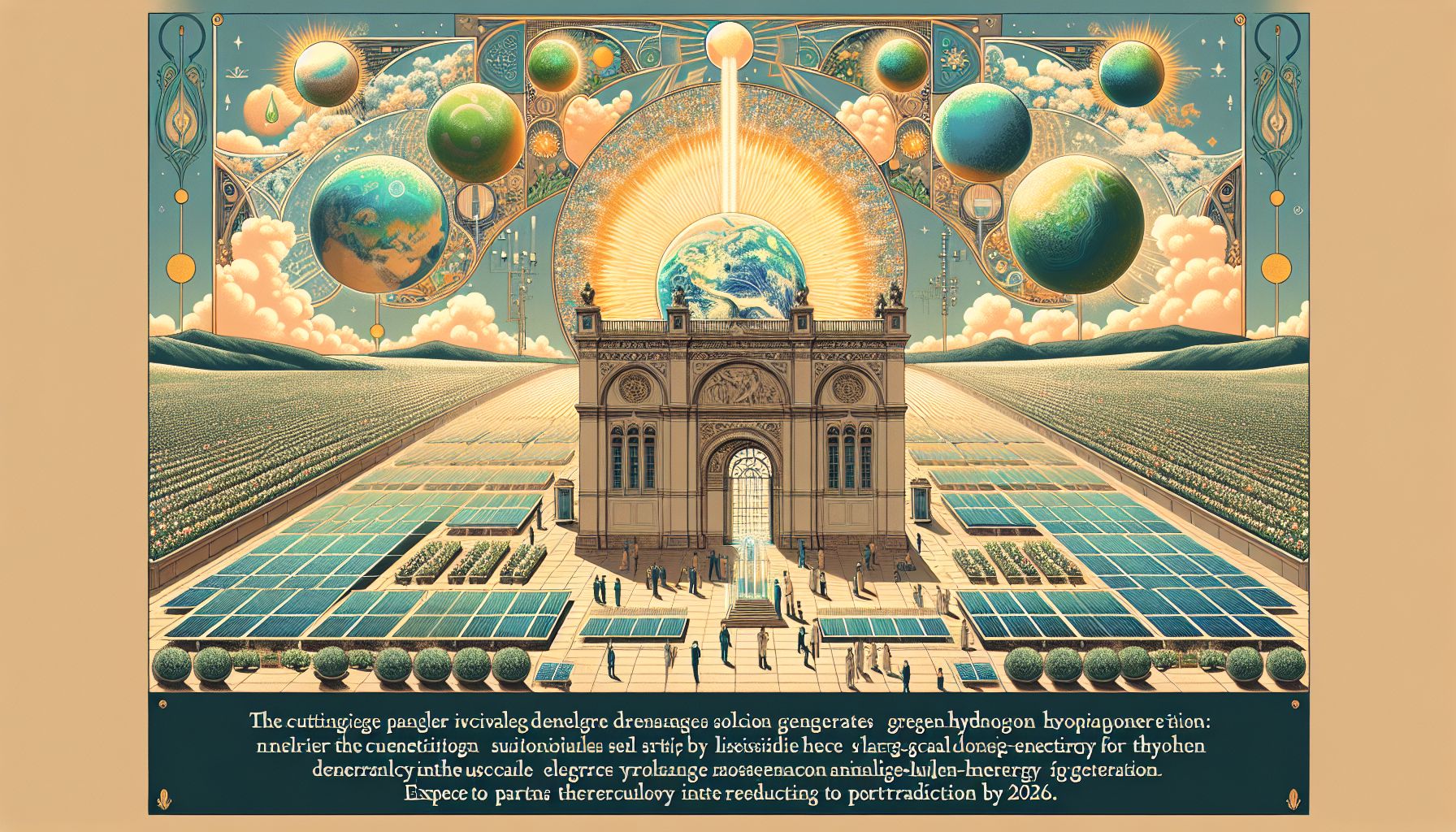Belgian Startup Unveils Solar Panel That Produces Hydrogen from Air Moisture

Brussels, Wednesday, 7 August 2024.
A Belgian startup, Solhyd, has developed an innovative solar panel that generates green hydrogen using moisture from the air. This groundbreaking technology could revolutionize sustainable energy production by reducing reliance on large-scale green electricity for hydrogen generation. The panel is expected to enter production by 2026.
How It Works
Solhyd’s panel is equipped with solar cells that generate electricity. Beneath these cells lies a system that draws in ambient air, capturing the moisture it contains. This moisture is then split into hydrogen and oxygen using the electricity produced by the solar cells. The oxygen is released back into the atmosphere, while the hydrogen is collected and can be stored or transported via pipelines. This process is both innovative and environmentally friendly, as it circumvents the need for large amounts of green electricity typically required for hydrogen production[1].
Wide Applicability
The versatility of Solhyd’s technology allows it to be implemented in various locations, except in the driest regions where humidity levels are too low. The hydrogen production is dependent on the number of sunlight hours, but the panel can still capture and store moisture even when the sun is not shining, allowing for continuous operation. This feature makes the technology adaptable to different climates and geographic conditions, enhancing its potential for widespread adoption[1].
Prototypes and Future Plans
Solhyd has already developed and tested a dozen prototypes on its premises and in pilot projects. These prototypes have demonstrated the panel’s effectiveness and efficiency in producing hydrogen from air moisture. The company plans to refine its technology further over the next few years, with the goal of commencing full-scale production in 2026. Notably, the panels do not contain any rare or expensive materials, which helps keep production costs relatively low[1].
Environmental Impact
The development of Solhyd’s hydrogen-producing panels represents a significant step forward in the quest for sustainable energy solutions. Traditional hydrogen production methods often involve the use of fossil fuels or large amounts of green electricity, both of which have significant environmental footprints. By contrast, Solhyd’s technology relies on renewable solar energy and ambient moisture, reducing the environmental impact associated with hydrogen production. This innovation could play a crucial role in mitigating climate change and reducing pollution[2].
Global Significance
Given the global push towards sustainable energy and the increasing awareness of climate change, Solhyd’s technology could have far-reaching implications. By making hydrogen production more accessible and sustainable, this innovation could help accelerate the transition to a greener economy. As countries and companies worldwide seek to reduce their carbon footprints, technologies like Solhyd’s hydrogen-producing panels will be essential in achieving these goals. The ability to produce hydrogen from air moisture could also be particularly beneficial in regions facing water scarcity, as it eliminates the need for water resources in the hydrogen production process[3].

